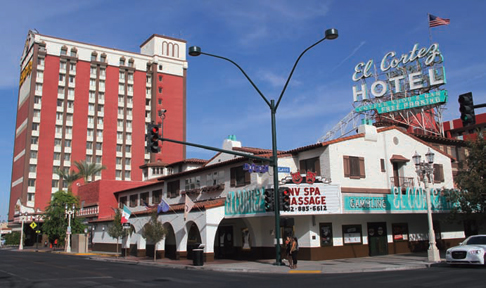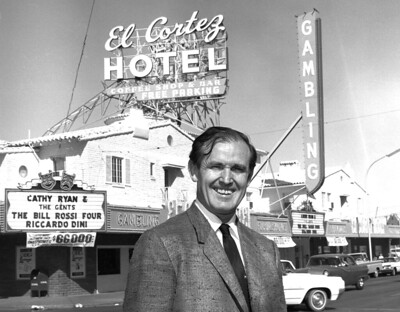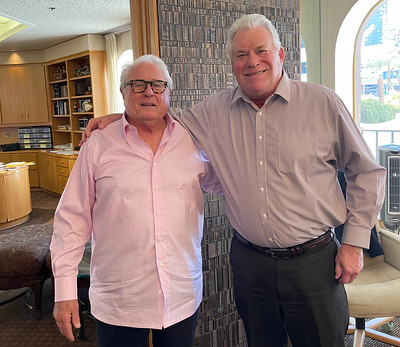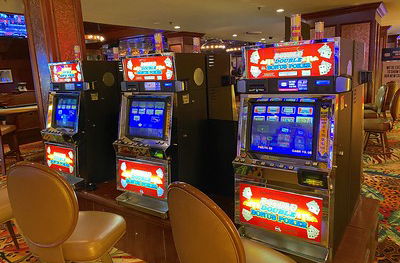
There is a contingent of Las Vegas natives who contend that the town was run better when the mob was in control. That, of course, discounts the money laundering, the skimming, the loan sharking and yes, the murders, but they seem to have a nostalgic sense about the “old” Las Vegas. So let’s ignore the bad stuff and focus on what represents old Vegas. Well, the Sands, the Frontier, the Stardust, the Desert Inn, the Dunes and dozens of other old-time Vegas casinos are all gone, so what’s left?
For those who want to slake their nostalgic jones, head Downtown and visit El Cortez, one of the original Vegas casinos (with apologies to the Golden Gate at the foot of Fremont Street), and the longest continuously operating Nevada casino.
El Cortez was built by a group led by one of the original Vegas entrepreneurs, J. Kell Houssels, for $245,000 in 1942, only a decade after gaming became legal in Nevada. Despite the fact it was on the same Fremont Street as the Golden Gate, it was considered too far from the town center to become a success. But it bucked the trend and became a big success, so Houssels sold the property to a group of mobsters led by Meyer Lansky and Bugsy Siegel in 1945 for $600,000. When Siegel was close to opening his spectacular Flamingo on what would become the Las Vegas Strip, Houssels bought El Cortez back from the mob a year later for $766,000, with the stipulation that they’d never bother Houssels again.

Jackie Gaughan owned El Cortez for more than 50 years
In 1963, the “King of Downtown” Jackie Gaughan added El Cortez to his stable of properties, buying it from Houssels for $4.5 million. Over the years, Gaughan added a hotel tower and the former Ogden House, which was renovated into 64 suites, giving the property a total of 364 rooms and suites.
In 2008, Gaughan sold the property to his longtime partner, Kenny Epstein, who began working for Gaughan in 1975. He recounts his initial meeting with Gaughan during a visit to the Tahoe Biltmore in Northern Nevada, owned at the time by Gaughan.
“My father wanted me to meet Mr. Gaughan,” explains Epstein, “and he called him a ‘triple threat.’ I knew what that meant in football but my father explained what it meant in business. He said, ‘He’s smart, he’s a go-getter and he’s on the square. That’s a triple threat.’ So what more can you say about Jackie?”
For Epstein, being “on the square” was important. In 1975 many Vegas casinos were owned by the mob and its associates, and Epstein, like Houssels, wanted nothing to do with that.
After Gaughan sold to Epstein he continued to live at the hotel in a penthouse suite, spending his days playing poker in the hotel’s poker room, until he passed away in 2014. His suite is now available to guests, and it’s a step back in time, furnished in the ’40s style, the heyday of El Cortez.

Current owner Kenny Epstein (l.) and CEO Mike Nolan have run El Cortez for almost two decades
Epstein and his partners have sunk more than $50 million into the property since ’08, and made several substantial changes, including renovating every hotel room on the property.
Another was to reduce the number of restaurants from two (the Flame steakhouse and a coffee shop) to one. While that bucks the trend of more and more F&B outlets in today’s casinos, Epstein explains the logic.
“I had a fellow come to me once and he told me that we were ignoring our history,” Epstein says. “He said that he could design a restaurant with a Bugsy Seigel theme and it would be a smash hit. And he was right. Our Seigel’s 1941 restaurant does very well and has pictures of Bugsy, Virginia Hill and others from that period.”
El Cortez is one of the most honored casinos in Las Vegas, winning many categories in the “Best of Vegas” series published in the Las Vegas Review-Journal, including best comps, best players club, highest-paying slots, best tables and more.
A category that makes Epstein smile, however, is one that recognizes his employees, because as historic as El Cortez is, the secret of its success is the hospitality offered by employees. The reason is simple, says Epstein.
“It’s just a family business, and we care about these people,” he says. “Everybody cares about their customers, but when you can get your employees to really care about their customers, that’s what makes it so special.”

El Cortez offers some vintage video poker games that still accept coins
Mike Nolan, the CEO of El Cortez, says it all starts with Epstein.
“It wouldn’t happen without him,” he laughs. “He’s always talking to people in the elevators, asking them where they’re from and how they’re enjoying their stay. When they get home they write to tell us how thrilled they were to have met Kenny.
“Sometimes they even call him to make reservations! It’s that personal camaraderie that all the employees try to replicate.”
No, visiting the El Cortez won’t transfer you back to the days when the mob ruled Vegas, but it will allow you to experience the personal service, great food and good gamble that you might have found in those days.





